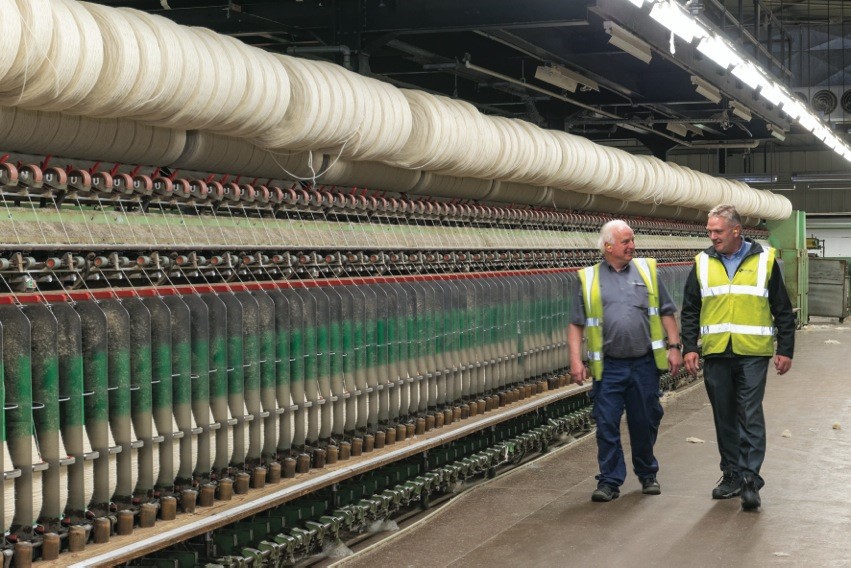

|
Edward Lowton
Editor |


|
| Home> | Plant, Process & Control | >Motors and drives | >DC to AC conversion |
| Home> | Energy Management | >Motors and drives | >DC to AC conversion |
DC to AC conversion
31 July 2015
Converting spinning frames from DC control to AC has helped increase production capacity of spun yarn at Brintons Carpets, while eliminating motor spare parts, lowering maintenance costs and saving energy.

All of the spinning frames were DC controlled. As the existing DC motors were obsolete, spares were not readily available. The 75kW motors needed regular maintenance with each one requiring 12 carbon brushes to be exchanged every year. "This totalled about £5,000, just on replacement carbon brushes across all the DC motors and excluding the manpower needed to carry out the work,” explains Dave Evans, electrical coordinator. "AC induction motors, however, can be repaired or rewound easily, thereby removing maintenance and spares issues faced with the DC solution.”
Brintons’ worked with Sentridge Control and asked about the feasibility of DC to AC conversion. Phil Tomkinson, Sentridge’s area manager, says: "The DC to AC conversion is something we have done before and when Brintons suggested this we immediately saw the potential.
"The biggest challenge was the increase in power needed by bringing in the additional machines, with each motor rated at 75kW, bringing the demand close to 1MW.”
At first it was thought that the factory’s transformer capacity was not sufficient to handle the increased loading from the additional carding machines and spinning frames. This was because the DC solution gave poor factor of about 0.4, which meant heavy current usage. However the AC solution vastly improves the power factor, reducing current and subsequently active power.
Sentridge undertook analysis on the transformers, logging all loading and calculating various 'what if…' scenarios over two weeks. The results confirmed that the 400A busbars did not need to be upgraded, nor did the transformers have to be increased in capacity. In fact, Sentridge calculated a significant saving in current across the Canalis busbar system thereby avoiding an increase in busbar copper and any change to the installed transformers, substation and switchgear.
Although energy saving was not the motivation for the conversion, Sentridge’s calculations showed that a saving could be achieved across all spinning frames of £40,000 per year.
The trial was undertaken with an early generation ABB industrial drive and revealed 19% energy savings, equating to 0.5MW per year. Since the trial, ABB has introduced a more efficient drive, the ACS880, that features 4th generation motor control platform, DTC, and the energy savings are even greater, totalling some 504,000dkWh saved. Together with the installation of IE3 ABB motors, return on investment was expected within three years but when the Government’s Enhanced Capital Allowance is factored in payback drops to 2.6 years.
- Variable speed drive eliminates grinder stoppages
- Tool takes uncertainty out of flow measurement
- Landfill site cuts pump power
- New laser level transmitter for harsh environments
- Telecoms contract
- Expanded network
- ABB drives savings
- Mounting features extend drive applications options
- Australian order won
- Self-averaging flowmeter

















